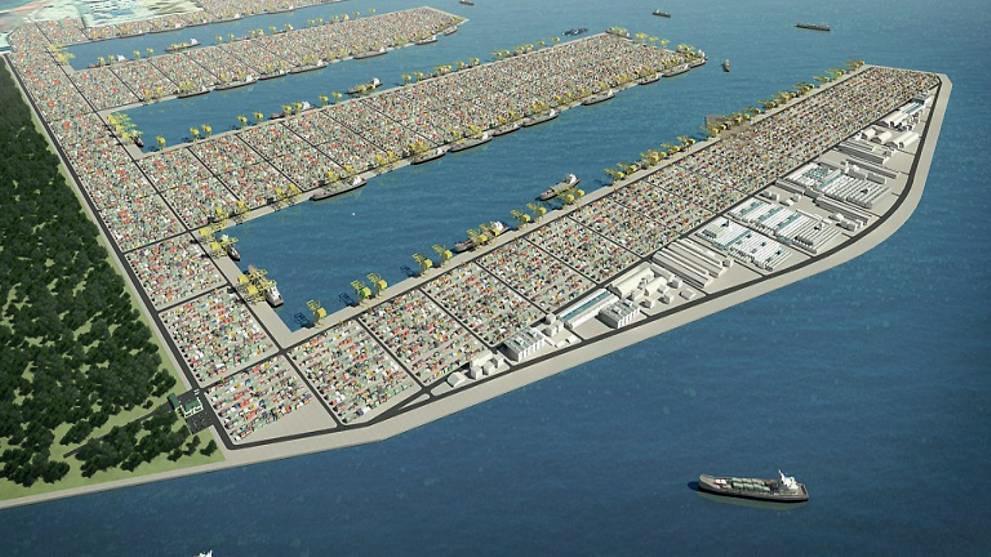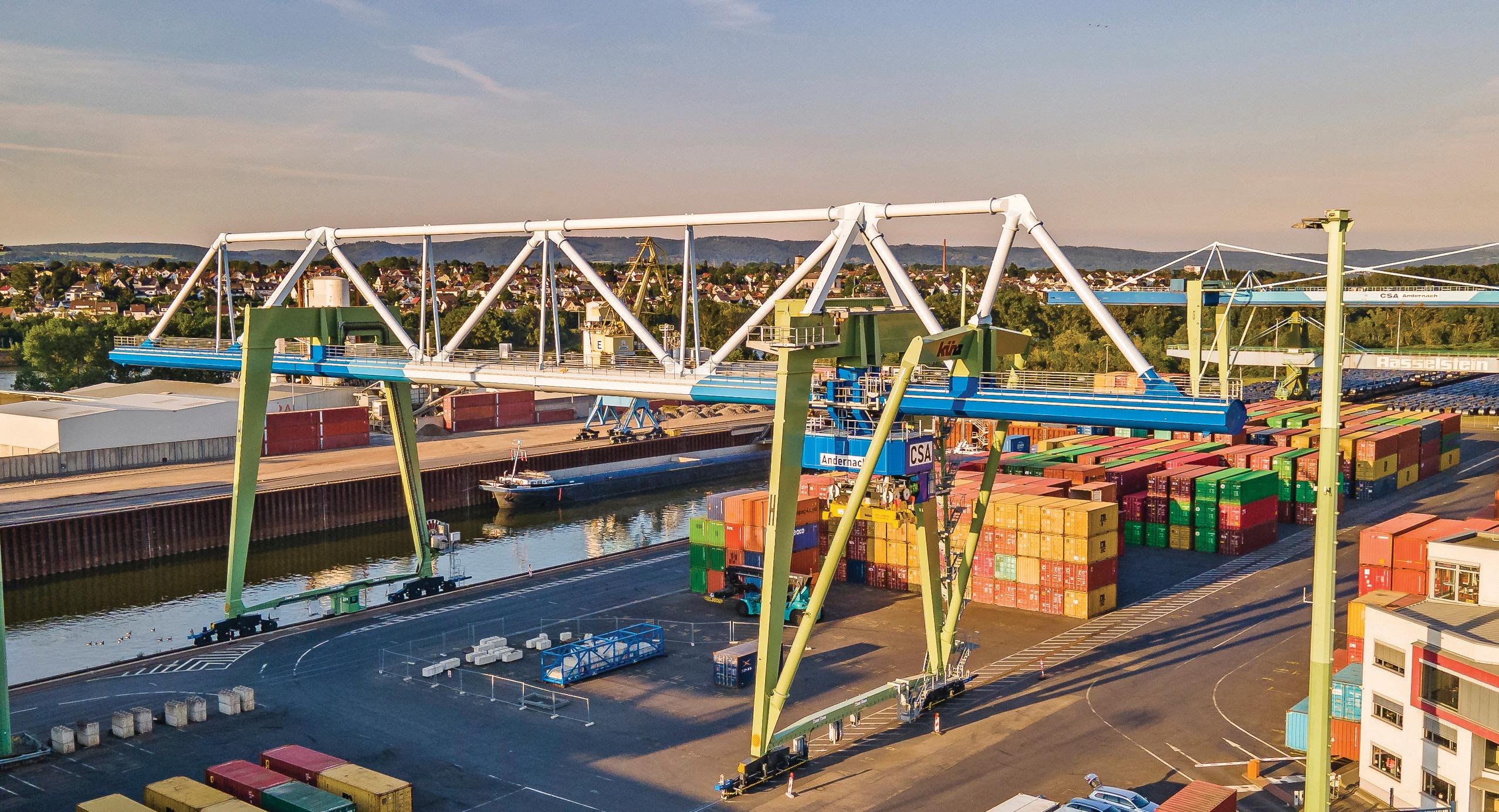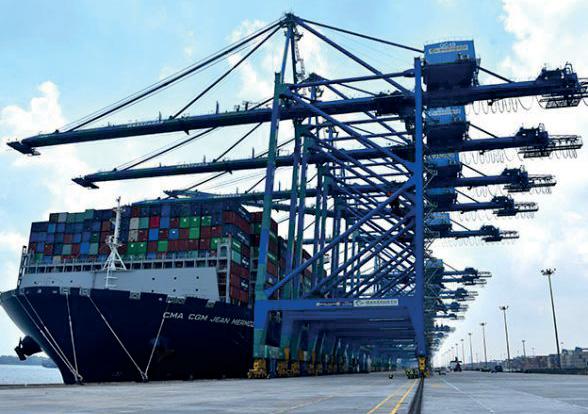
7 minute read
Investment Picture
THE INVESTMENT PICTURE
The addition of new port capacity is an ongoing task in South East Asia. The principal projects underway or planned are highlighted against a background of current and foreseeable trade trends. A J Keyes reports
Recent notable investment in Indonesia includes the Salim Group of Indonesia spending US$956 million to expand domestic manufacturing capacity for vegetable oil, margarine, and other food products, while Hyundai commenced development in 2020 of a US$1.5 billion plant in West Java to build electric vehicles. The company is also constructing a US$400 million mobility innovation centre in Singapore, according to local reports in the country.
Yet concerns remain for Indonesia as a whole. The Jakartabased Institute for Development of Economics and Finance, for example, has raised concerns that Indonesia has been struggling to increase foreign direct investment (FDI) due to a need to “establish a better regional trade network” to entice foreign manufacturers into the country, which includes improving port constraints.
This is despite the country attaining the status of the 10thlargest manufacturing nation in the world. The large manufacturing sector accounts for almost a quarter of the nation’s total GDP and employs over a fifth of Indonesia’s working age population (around 25 million workers). Yet it faces significant challenges, including intense international competition, particularly from China, increasing labour costs, high transportation and logistics costs, difficulties getting credit, and challenging levels of transparency and clarity in regulations.
In March 2021, DP World and global investment partner Caisse de dépôt et placement du Québec (CDPQ), signed a long-term agreement with leading conglomerate, Maspion Group of Indonesia, to development an international container port and industrial logistics park in Gresik. Work on the project is expected to begin before the end of 2021, with operations commencing in 2023. The total investment is put at US$1.2 billion
DP World Maspion East Java will become the sole operator of the facility, with a design capacity of up to 3 million TEU p.a. DP World and CDPQ will also work with Maspion Group to develop an integrated industrial and logistics park, adjacent to the container terminal, with an initial land area of 110 hectares with scope for future expansion.
Gresik is located very close to Surabaya, where DP World ended a container terminal operating concession in April this year. The global operator confirmed it did not want to renew that concession because, “the operating contract renewal terms offered by the Indonesian authorities did not meet our threshold for continued investment.”
SINGAPORE IS MOVING
Economic (and port development) activity in Singapore is much more advanced than in the rest of the ASEAN countries. This means productivity in the country is much more comparable to other developed countries in terms of industrial activity and related investment. This is certainly reflected in the development, volumes and activity at the country’s container port terminals.
The port’s future is the new Tuas mega-port. It was first announced back in 2012 and is a suitable location because of its sheltered deep waters and proximity to both international shipping routes and major industrial areas in the western part of Singapore.
All existing city terminals will eventually be merged at Tuas. This consolidation of container port activities will not only result in increased efficiency in port operations due to the elimination
8 Rendition
of Singapore’s new Tuas Port development expected to claim the title of the largest container facility in the world
of inter-terminal haulage, but also ties-in with expiration of port leases at Tanjong Pagar, Keppel and Brani in 2027.
The Tuas development is expected to be the largest container terminal in the world, with a total capacity of up to 65 million TEU. The current terminals have, according to PSA, a combined 50 million TEU capacity.
The other highly important factor is that the whole terminal relocation process will also free-up prime and highly valuable land for housing and urban development as part of the Greater Southern Waterfront.
MALAYSIA UNDER PRESSURE – BUT PORT MOMENTUM
Earlier this year the Malaysian Investment Development Authority (MIDA) stated that companies in the country must “innovate and increase” their value proposition through research and development to better compete because just 3.5 per cent of Malaysian firms had “introduced new products in the past three years.”
There is a strong competitive pressure coming from China too. In late August 2021, local press reports were stating that the reemergence of COVID-19 was being used by Chinese companies as the reason to move production lines of semiconductors and other similar components to the Chinese mainland to ensure that the supply of these items is not disrupted by the pandemic. Clearly, this can be seen as a manifestation of new political realities and a more assertive China.
During late August/early September, rising COVID-19 infections rates in Malaysia resulted in the government ordering many businesses and factories to shut down, thereby affecting production in a wide range of sectors, especially the packing and testing of chips and passive component manufacturing. Malaysia is the world’s seventhlargest semiconductor exporter.
Port Tanjung Pelepas is a joint venture between MMC Corporation Berhad (70 per cent), a utilities and infrastructure group and APM Terminals (30 per cent). The port has known plans to expand from the current 12.5 million TEU per annum to be able to accommodate up to 30 million TEU by 2030.
Interestingly, this objective was set by Malaysia’s transport minister in 2019, adding that there were concerns full capacity could be reached “within three to four years.”
The port has not been affected by the global pandemic in 2019-2020 and has actually recorded an increase of 7.7 per cent for 2020, over 2019 activity.
Recent capacity expansion has seen new Super Post Panamax cranes delivered, able to support large container ships requiring up to 16m water depth, while positive steps in introducing advanced technology are occurring. The port is using Portchain’s Berth Optimisation Engine to optimise berth planning operations and increase productivity while reducing operating costs, but also recognises the need to fully embrace artificial intelligence, blockchain technology, IoT (Internet of Things), 5G and wireless communications must fully continue – and across all ports.
Singapore is freeing-up prime and highly valuable waterfront land ‘‘

INNOVATIVE SOLUTIONS FOR A SUSTAINABLE FUTURE

www.kuenz.com
Westports Holdings Berhad (WHB), the container terminal operator at Port Klang, remains committed to its expansion plans from CT10 to CT17.
In 2020, WHB invested and completed container yard Zone Z at CT9 at the cost of RM81 million, as part of investing RM323m in capital expenditure to enhance its container and conventional operational capabilities.
The continued investment by WHB does cast doubt on the need for the proposed Carey Island project, at least for the immediate future. The ambitious plan to build a RM140 billion (S$45.5 billion) mega port on an island off Selangor has been shelved for now by its main promoter MMC Corp.
The Malaysian government previously confirmed it wanted to conduct a “ feasibility study” on the project, but with WHB’s ongoing expansion and having to focus on the COVID-19 pandemic recently, the short term future for the Carey Island project looks unfavourable.
Another project struggling for traction is at Kuala Tanjung, Indonesia, where long-standing plans exist to develop Kuala Tanjung International Hub Port. In 2019, an agreement by the operator was signed with Port of Rotterdam Authority and Zhejiang Provincial Seaport Investment & Operation Group (operator in Ningbo, China), to develop port capacity and an adjacent industrial zone, but it was not until May 2021 that a Memorandum of Understanding (MOU) and a term sheet was ratified.
This should see some positive movement but the focus remains on multipurpose activities, including containers, liquid bulks and general cargo.
HIGHLY DYNAMIC
The region overall remains highly dynamic with various ports progressing and planning capacity expansion. With the regional emphasis moving away from China (at least at the headline level), further sustained demand increases will benefit the region.
This means strong export demand potential and opportunities for transshipment activity. Essentially a continuation of established trends.

8 Continued
investment by WHB in Port Klang casts doubt on the need for the proposed Carey Island project












